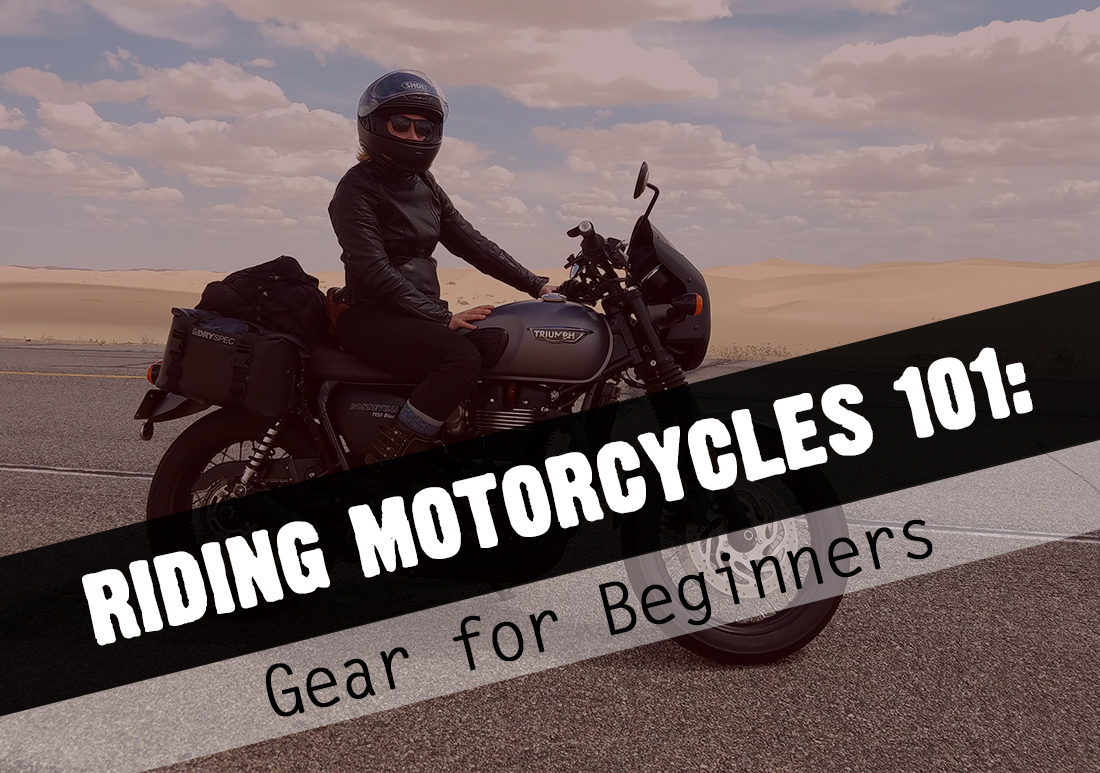 This is part III in a series of advice for new riders. Stay tuned for tips on learning to ride, buying the right gear, and other things we wish someone would’ve told us when we were first starting out. (View the whole series)
This is part III in a series of advice for new riders. Stay tuned for tips on learning to ride, buying the right gear, and other things we wish someone would’ve told us when we were first starting out. (View the whole series)
—
When you’re first starting on a motorcycle – gear feels like a series of Big Decisions. When I started shopping around I was both overwhelmed by the types of gear, and underwhelmed by the options available in town. The good news about that? I’ve replaced all my initial gear twice over (at least). The bad news? The stores in town still don’t sell much in the way of gear that I want to buy. (Lucky for me, the internet exists!)
Fear not, new riders, I have some guidelines for you! They follow a few basic concepts:
- Safety First! – don’t compromise your safety for appearance or price as a newbie. There will be plenty of time for that when you’ve put some solid miles under your butt.
- You Don’t Know What You Like – if you haven’t ridden, you have no idea what kind of gear you’re going to like – so don’t worry about falling in love with your first pair of gloves or your first jacket.
Helmets
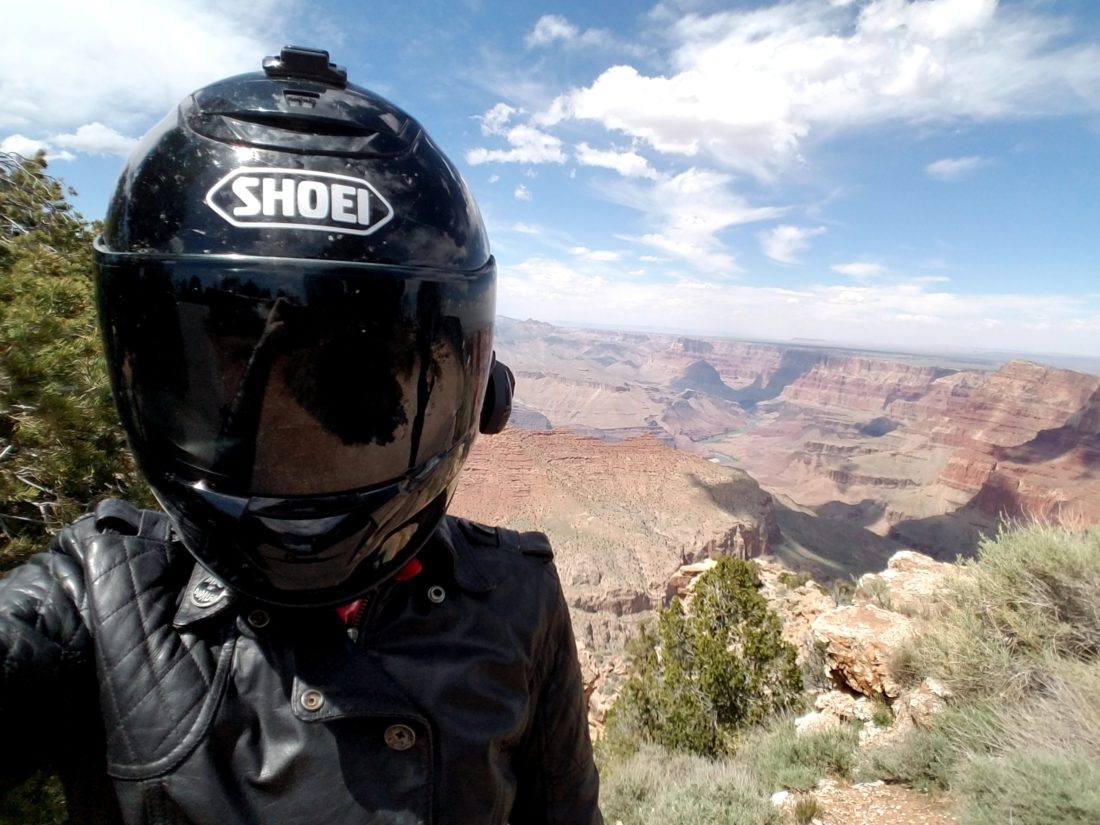
THIS is where you should put most of your starting gear budget. You only have the one brain, and head injuries are scary, so take some time to find something that fits well and meets basic safety ratings. CycleGear is a good place to try out helmets – they have a lot of retail outlets, and they have a 30 day helmet return policy. In California, they don’t sell any helmets without at least a DOT safety rating.
[bsc_alert type=”info” dismissible=”false”]
A note about helmet ratings:
DOT is a Department of Transportation safety rating.
ECE is an Economic Commission for Europe standard.
SNELL is for the Snell Memorial Foundation – this is a common rating for race helmets.
Read more about each type
[/bsc_alert]
Even if you’re in a helmet-free state, I recommend a DOT or higher rated helmet for new riders. Your mom/neighbor/co-worker/friend is right, it is dangerous and you should let yourself assess those risks as safely as possible before deciding to reduce your gear.
Personally, I prefer a full-face helmet. I’ve found that it stresses me out to have a half-helmet or a ¾ helmet tugging on my neck in the breeze – plus I like the additional safety and quieter performance of the full face. As a bonus – I have yet to eat any bees, rocks, hay, or cigarette butts.
I’ve worn Arai, Bell, Icon, and Shoei helmets and have found them to be safe and reliable brands – though there are a lot of quality helmets out there that I don’t have experience with. I ride with a Shoei RF-1200 regularly, but I started out with a lower-end Icon full-face and it was perfect for a newbie. A lot of women love the Biltwell Gringo series because they’re retro, cute, and safe – but I found that in the end I prefer the vents and performance of a modern style helmet.
Jackets
I ended up HATING the first armored jacket I got. It was totally fine for learning, and it had all the safety features so I’m glad I started with it. But I have gone through probably 10 jackets since then. My advice for jackets is to try on some clearance stuff at a nearby bike shop, find your size, and then hit eBay if you can’t find a good deal. Get something with full armor (shoulder, elbow, back protector) – but don’t bother trying to find something you love yet. Once you get out riding you’ll learn if you run hot or cold, if you like pockets, if you like something streamlined, if you want a zipper to pants…quality jackets can be very expensive so I recommend just getting whatever discount jacket you can until you know what you’re going to want. Or you can be like me and have six riding jackets in your closet.
Pants
I know women who have never worn anything but jeans to ride and women who can quote the slide distance for your average pair of fashion jeans. The reality is that fashion denim isn’t very safe. It isn’t going to save you from impact or road rash if you hit the ground with any kind of speed. For that kind of protection you need abrasion-resistant fabrics (kevlar, cordura, Dyneema Denim, etc) and armor (knee and hip). You can find abrasion-resistant denim from any number of companies. You could also opt for a true riding pant and get armored cordura or leather pants. As a beginner – I’d just grab something inexpensive with armor. Textile over-pant options are not very cute – but they protect your legs and fashion pants in a fall, and you won’t feel bad about moving on from them after you know what kind of riding you’ll be doing.
Gloves
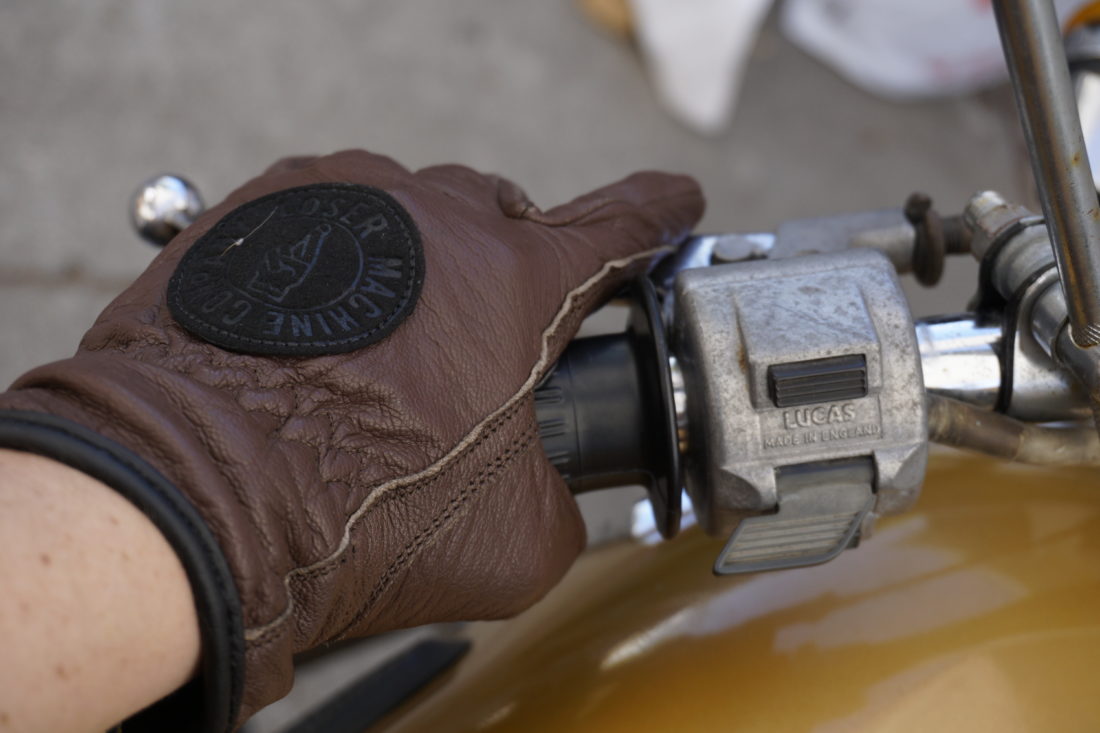
Gloves should be easy, but they are not. Some gloves have armor and slide pads in the palms, and some gloves are just leather. Some gloves are waterproof, some are mesh. Some are $35, some are $250. Your primary focus for your first pair should be climate appropriate (eg: If it’s fall, you probably shouldn’t get mesh gloves or your fingers will be super cold all the time). You probably won’t be doing any riding where you need knuckle armor at first, but the gloves with palm-sliders (to keep your hand from sticking to the ground in the event of a slide) usually have them. The most important thing is that they are comfortable, and they keep you comfortable. You don’t want to be worrying about pinched fingers or cold hands when you’re trying to learn how to use your clutch and your turn signals at the same time.
Boots
True motorcycle boots have a shaft in the foot that keeps it stiff (that’s what she said). This stiffness makes it easier to shift and brake, and also keeps your foot in a more natural position if it should be – say – run over by a car. They also have cups around the ankles to keep them protected if you end up in a slide under a bike. They typically have non-skid soles and are not very comfortable for walking. When you’re learning, you can probably get away with a sturdy regular boot (like a pair of Red Wings or Doc Martens). Steel toes aren’t necessary or recommended for riding. As you start hitting track days or twisty roads, you will want to upgrade to a pair of boots with armor while you learn your limits.
And that’s it! As you ride, you’ll grow your gear closet. Every year more and more options are released for women that have an eye for fit while keeping safety paramount, so save your allowance!
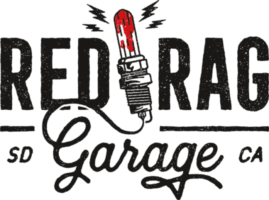
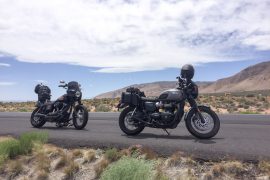
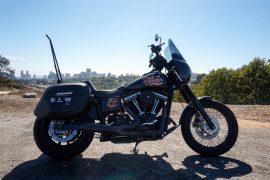
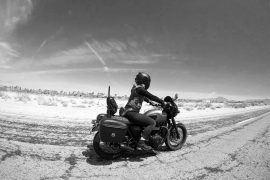
1 Comment
Great! Been wanting to get a bike for a while, learn how to drive one. Better mobility and the coolness factor is a plus!